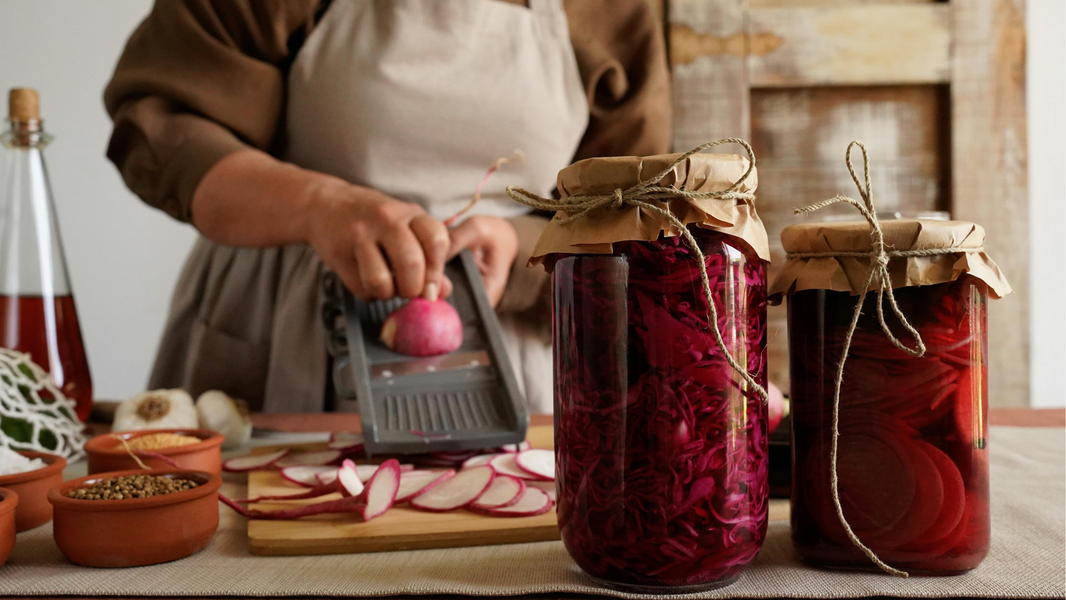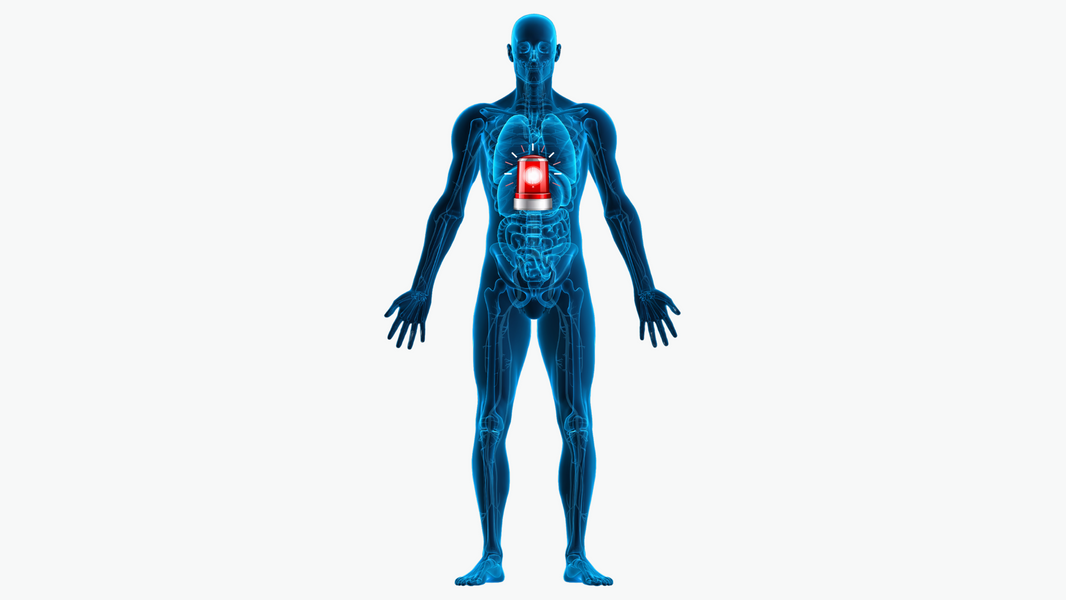Why Your Gut Might Need a Break from Cruciferous Vegetables
When "Healthy" Foods Don't Feel Healthy
Picture this: You're committed to eating well, loading your plate with broccoli, cauliflower, and kale because that's what healthy eating looks like, right? But instead of feeling energized and vibrant, you're dealing with bloating, gas, and discomfort. Sound familiar?
You're not imagining things, and you're definitely not alone. Sometimes the foods we've been told are universally "healthy" might not be the best choice for our individual bodies, especially when we're working to heal our gut and reduce inflammation.
Let's explore why cruciferous vegetables, particularly broccoli, might deserve a temporary pause in your wellness approach, and how understanding this can transform your relationship with food and your body.

Understanding Cruciferous Vegetables: Nature's Complex Creations
Cruciferous vegetables belong to a fascinating plant family that includes broccoli, cauliflower, kale, brussels sprouts, and cabbage. These vegetables have earned their reputation as nutritional powerhouses, and for good reason. They're packed with vitamins, minerals, and fiber that can support overall health (1).
But here's where things get interesting: these same vegetables contain unique compounds that can create challenges for some people, particularly those dealing with digestive sensitivities or working to restore gut balance.
The Natural Defense System
When you cut, chew, or damage cruciferous vegetables, they release chemical compounds called thiocyanates, which act as the plant's natural pesticide system (5). Think of it as the vegetable's built-in security system, designed to protect it from insects and other threats in nature.
While this defense mechanism is brilliant from an evolutionary perspective, it can sometimes create unexpected reactions in our bodies. Clinical observations suggest that these compounds, particularly in their concentrated forms, may cause sensitivities in some individuals. Even though cooking and freezing typically break down most of these natural pesticides, some people may still experience reactions to the remaining compounds.

The Thyroid Connection: Why Your Metabolism Might Be Affected
Here's something that might surprise you: those same protective compounds in cruciferous vegetables can potentially affect your thyroid gland, which acts as your body's metabolic control center.
How Thiocyanates Impact Thyroid Function
Thiocyanates can interfere with your body's ability to process iodine, an essential mineral for healthy thyroid function (5). When your thyroid doesn't get the iodine it needs, it can't produce hormones effectively. This disruption might lead to:
-
Unexplained weight changes
-
Hair loss or thinning
-
Skin issues and dryness
-
Fluid retention and puffiness
-
Fatigue and low energy
The good news? Cooking these vegetables usually removes most of the compounds that could interfere with thyroid function. However, if you already have a thyroid condition or sensitive thyroid function, even small amounts of thiocyanates might be enough to cause noticeable effects.

The Raffinose Factor: Understanding Digestive Discomfort
Ever wonder why broccoli and its cousins can cause such memorable digestive experiences? The answer lies in a complex sugar called raffinose.
What Makes Raffinose Different
Unlike simple sugars that your body breaks down easily in the small intestine, raffinose is a tough customer. It travels all the way to your large intestine intact, where your gut bacteria finally get to work on it (2). When they do, the fermentation process creates significant amounts of intestinal gas.
This isn't necessarily a bad thing when your microbiome is balanced and healthy. In fact, healthy gut bacteria actually thrive on compounds like raffinose. But here's the catch: if your microbiome is struggling or imbalanced, this fermentation process can lead to:
-
Excessive gas and flatulence
-
Uncomfortable bloating
-
Abdominal pain and cramping
-
General digestive distress
Research has shown that these symptoms can be particularly pronounced when your gut is in a healing phase, which is why temporarily reducing cruciferous vegetables might provide relief while you work on restoring digestive balance (3).
The Microbiome Connection: It's All About Timing
Your gut microbiome, that complex ecosystem of bacteria living in your digestive system, plays a crucial role in how you respond to different foods. Studies have demonstrated that the composition and health of your gut bacteria significantly influence how well you tolerate various foods, including cruciferous vegetables (4).
When Your Gut Bacteria Are Out of Balance
An imbalanced microbiome might struggle to process the complex compounds in cruciferous vegetables effectively. This can create a cycle where:
-
Undigested compounds feed potentially problematic bacteria
-
Gas production increases beyond comfortable levels
-
Inflammation in the gut lining may occur
-
Your body's stress response gets triggered
The fascinating part? Once your microbiome returns to a balanced state, many people find they can enjoy cruciferous vegetables again without the uncomfortable side effects. It's not about eliminating these foods forever; it's about giving your gut the time and conditions it needs to heal.

Personalized Nutrition: Finding What Works for Your Body
Here's a revolutionary thought: there are no universally "right" or "wrong" foods. There are only foods that are right or wrong for YOU at this particular moment in your wellness story.
Listening to Your Body's Signals
Your body is constantly communicating with you through various signals:
-
Energy levels after meals
-
Digestive comfort or discomfort
-
Skin clarity or breakouts
-
Mood stability or fluctuations
-
Sleep quality
When you start paying attention to these signals, you might notice patterns. Perhaps you feel great after eating certain vegetables but struggle with others. Maybe broccoli causes bloating on Monday but feels fine on Friday. These observations are valuable data about your unique body.
The Reintroduction Process
Taking a break from cruciferous vegetables doesn't mean saying goodbye forever. Think of it as pressing the reset button on your digestive system. After a period of healing and restoration, you can systematically reintroduce these foods to see how your body responds.
Many people find that after supporting their gut health through an anti-inflammatory approach, they can enjoy cruciferous vegetables again, often in greater quantities than before. The key is patience and paying attention to your body's feedback.
Practical Strategies for Managing Cruciferous Vegetables
If you're not ready to completely eliminate these vegetables but want to minimize potential issues, here are some evidence-based strategies:
Cooking Methods Matter
Research shows that different cooking methods can significantly reduce the compounds that cause digestive issues (2):
-
Steaming: Helps break down tough fibers while preserving nutrients
-
Roasting: Can reduce raffinose content and improve digestibility
-
Fermenting: Pre-digests some of the problematic compounds
-
Blanching: Quick cooking in boiling water can reduce gas-producing compounds
Portion Control and Timing
Start small and gradually increase portions as your body adjusts. Eating cruciferous vegetables as part of a mixed meal, rather than on an empty stomach, can also improve tolerance.
Supporting Digestive Enzymes
Some people find that taking digestive enzymes specifically designed to break down complex sugars can help reduce gas and bloating from cruciferous vegetables. While not necessary for everyone, this can be a helpful tool during the transition period.
The Bigger Picture: Inflammation and Gut Health
Understanding why certain "healthy" foods might not work for you right now is part of a larger conversation about inflammation and gut health. When your digestive system is inflamed or imbalanced, it becomes more reactive to foods that wouldn't normally cause problems.
Creating Conditions for Healing
By temporarily reducing foods that challenge your digestive system, you create space for healing. This isn't about restriction; it's about strategic choices that support your body's natural healing processes. Think of it as giving your gut a vacation from hard work so it can focus on repair and restoration.
During this healing phase, focusing on easily digestible, anti-inflammatory foods allows your gut lining to repair itself and your microbiome to rebalance. Once this foundation is strong, you can gradually expand your food choices based on how your body responds.
Conclusion: Your Wellness, Your Way
The story of broccoli and cruciferous vegetables perfectly illustrates why personalized nutrition matters. What works wonderfully for your neighbor might not work for you, and that's completely normal and okay.
Remember, taking a break from certain foods isn't about labeling them as "bad." It's about recognizing that your body might need different support at different times. Some people thrive on cruciferous vegetables from day one, while others need time to build up their digestive resilience.
The path to optimal health isn't about following rigid rules or forcing yourself to eat foods that make you feel unwell, no matter how "healthy" they're supposed to be. It's about developing a deep understanding of your body's unique needs and responses, then making informed choices that support your wellbeing.
Trust your body's wisdom. If broccoli doesn't feel good right now, that's valuable information, not a failure. Give yourself permission to make choices that support your healing process, knowing that your food options can expand as your gut health improves.
Your wellness story is unique to you. By honoring your body's signals and making thoughtful choices about what you eat, you're not just improving your digestion, you're building a sustainable, personalized approach to health that can serve you for life.
Key Takeaways
-
Cruciferous vegetables contain natural compounds like thiocyanates and raffinose that can cause digestive issues and potentially affect thyroid function in sensitive individuals
-
Temporary elimination isn't permanent: Taking a break from these vegetables while healing your gut doesn't mean avoiding them forever
-
Cooking methods matter: Steaming, roasting, and fermenting can significantly reduce problematic compounds in cruciferous vegetables
-
Your microbiome status determines tolerance: An imbalanced gut may struggle with these vegetables, but a healed gut often handles them well
-
Personalized nutrition is key: There are no universally "right" foods, only foods that work for your unique body at this moment in time
References
-
Nutritional and Phytochemical Composition of Cruciferous Vegetables. ScienceDirect. https://www.sciencedirect.com/science/article/pii/S0022316625003244
-
How to Prevent Gas After Eating Broccoli. Everyday Health. https://www.everydayhealth.com/excessive-gas/how-to-prevent-gas-after-eating-broccoli/
-
Cruciferous Vegetables and Human Health. PMC - National Center for Biotechnology Information. https://pmc.ncbi.nlm.nih.gov/articles/PMC4892312/
-
The Gut Microbiome and Dietary Fiber Consumption. PubMed. https://pubmed.ncbi.nlm.nih.gov/35215393/
Thiocyanate: Properties and Health Effects. ScienceDirect Topics. https://www.sciencedirect.com/topics/medicine-and-dentistry/thiocyanate -
Bioactive Compounds in Cruciferous Vegetables and Their Effects. PMC - National Center for Biotechnology Information. https://pmc.ncbi.nlm.nih.gov/articles/PMC4892312/
The information provided here is for general knowledge and educational purposes only. It should never replace personalized medical guidance from your physician or another qualified healthcare provider. We do not offer medical advice.






